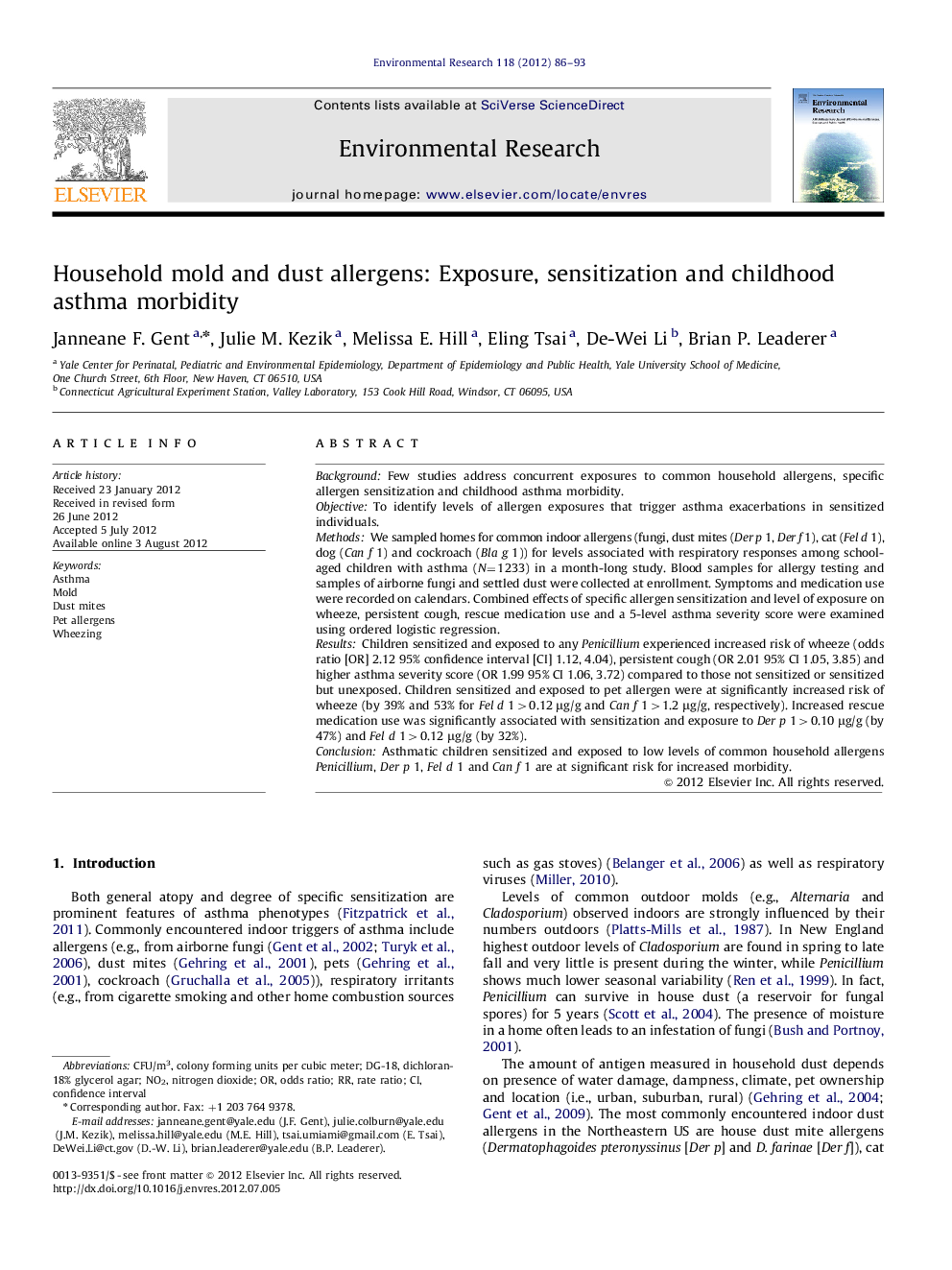| Article ID | Journal | Published Year | Pages | File Type |
|---|---|---|---|---|
| 4469986 | Environmental Research | 2012 | 8 Pages |
BackgroundFew studies address concurrent exposures to common household allergens, specific allergen sensitization and childhood asthma morbidity.ObjectiveTo identify levels of allergen exposures that trigger asthma exacerbations in sensitized individuals.MethodsWe sampled homes for common indoor allergens (fungi, dust mites (Der p 1, Der f 1), cat (Fel d 1), dog (Can f 1) and cockroach (Bla g 1)) for levels associated with respiratory responses among school-aged children with asthma (N=1233) in a month-long study. Blood samples for allergy testing and samples of airborne fungi and settled dust were collected at enrollment. Symptoms and medication use were recorded on calendars. Combined effects of specific allergen sensitization and level of exposure on wheeze, persistent cough, rescue medication use and a 5-level asthma severity score were examined using ordered logistic regression.ResultsChildren sensitized and exposed to any Penicillium experienced increased risk of wheeze (odds ratio [OR] 2.12 95% confidence interval [CI] 1.12, 4.04), persistent cough (OR 2.01 95% CI 1.05, 3.85) and higher asthma severity score (OR 1.99 95% CI 1.06, 3.72) compared to those not sensitized or sensitized but unexposed. Children sensitized and exposed to pet allergen were at significantly increased risk of wheeze (by 39% and 53% for Fel d 1>0.12 μg/g and Can f 1>1.2 μg/g, respectively). Increased rescue medication use was significantly associated with sensitization and exposure to Der p 1>0.10 μg/g (by 47%) and Fel d 1>0.12 μg/g (by 32%).ConclusionAsthmatic children sensitized and exposed to low levels of common household allergens Penicillium, Der p 1, Fel d 1 and Can f 1 are at significant risk for increased morbidity.
► Few studies address concurrent allergen exposures, sensitization and asthma morbidity. ► Children with asthma were tested for sensitivity to common indoor allergens. ► Homes were sampled for these allergens and asthma morbidity monitored during the subsequent month. ► Children exposed and sensitized to Penicillium, Der p, Fel d, Can f risk increased asthma morbidity. ► These children might benefit from targeted intervention strategies.
